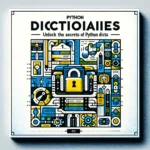A. Tensors: The Foundation of TensorFlow
Hey there! Ever wondered how machines learn to recommend your favorite movies, predict weather, or even drive cars? Behind these marvels is a fascinating world of data, algorithms, and a key player: TensorFlow. Today, we’re embarking on a journey to unravel the magic behind TensorFlow, focusing on “what are tensors, data flow graphs, basic operations” and why they’re pivotal in machine learning (ML).
Imagine you’re cooking a complex dish for the first time. You have your ingredients (data), a recipe (algorithm), and your cooking tools (TensorFlow). Just like having quality ingredients is crucial for your dish, understanding tensors—the foundation of TensorFlow—is key to mastering ML applications. So, let’s make this complex topic as simple and savory as preparing your favorite meal.
What are Tensors?
Tensors are essentially the ingredients of our ML recipes. In the simplest terms, a tensor is a container that can hold data in multiple dimensions. Think of it as a generalized matrix or an n-dimensional array. For example, a single number can be a tensor (0-D), a line of numbers is a 1-D tensor, a table of numbers is a 2-D tensor, and so on. The power of tensors comes from their ability to represent complex data structures like images, sound, and texts in a way that machines can understand and process.
Types of Tensors and Their Applications in ML
Tensors come in various shapes and sizes, each serving unique purposes in ML:
- Scalars (0-D tensors): Just a single number. Think of it as a single dot on a page.
- Vectors (1-D tensors): A line of numbers. Imagine a line of ants marching – each ant representing a data point.
- Matrices (2-D tensors): Tables of numbers. Picture a chessboard, where each square holds a piece of data.
- 3-D tensors and higher: These are used for more complex data. A 3-D tensor could represent a series of images over time, akin to a flipbook.
Each type of tensor has its role, from feeding simple numbers into a model to inputting images into a convolutional neural network for image recognition.
Basic Operations on Tensors
Now, let’s get our hands dirty with some basic tensor operations, essential for manipulating and transforming data in ML:
- Addition: Just like adding numbers, tensor addition combines data point-wise. It’s like mixing ingredients together in a bowl.
- Subtraction: This operation helps in differentiating data points, akin to removing an ingredient from your mix if there’s too much of it.
- Multiplication: You can scale your data by multiplying tensors, similar to adjusting the quantity of an ingredient to perfect your recipe.
Let’s see these operations in action with a simple TensorFlow code snippet:
import tensorflow as tf
# Create two 1-D tensors (vectors)
tensor_a = tf.constant([1, 2, 3], dtype=tf.float32)
tensor_b = tf.constant([4, 5, 6], dtype=tf.float32)
# Perform basic operations
tensor_add = tf.add(tensor_a, tensor_b) # Addition
tensor_subtract = tf.subtract(tensor_a, tensor_b) # Subtraction
tensor_multiply = tf.multiply(tensor_a, tensor_b) # Multiplication
print("Addition:", tensor_add.numpy())
print("Subtraction:", tensor_subtract.numpy())
print("Multiplication:", tensor_multiply.numpy())Here, we introduced two tensors and performed basic arithmetic operations. The output showcases how each element of the tensors interacts through these operations, akin to blending distinct flavors in a dish.
Wrapping Up with a Peek into the Future
Congratulations! You’ve just scratched the surface of the vast and intriguing world of TensorFlow, understanding the essence of tensors and their basic operations. As we delve deeper into TensorFlow in our upcoming topics, remember that like cooking, mastering ML is about practice, experimentation, and a dash of creativity.
B. Variables: Storing and Updating Data
Alright, my friend, let’s continue our adventure into the heart of TensorFlow, focusing today on “variables in TensorFlow, data flow graphs.” Just like how we need both ingredients and a recipe to cook a delicious meal, in machine learning, we need data (our ingredients) and a way to process it (our recipe). Variables are our pantry, storing all the essential ingredients, while data flow graphs lay out the recipe for our machine learning feast. Let’s make these concepts as easy to digest as a piece of cake!
B. Variables: The Pantry of TensorFlow
Think of variables in TensorFlow like jars in your kitchen pantry. Each jar can hold different ingredients (data) and can be refilled or changed as needed. In machine learning, we often need to tweak our data or model parameters as we train our algorithm, and variables make this possible and efficient.
Initializing and Modifying Variables
Let’s whip up a simple TensorFlow example to see variables in action:
- Initializing a Variable: First, we’ll create a variable to store our data.
- Modifying the Variable: Then, we’ll update it, just like you might adjust your ingredients as you taste-test your dish.
import tensorflow as tf
# Initialize a TensorFlow variable with an initial value of 10
initial_value = 10
my_variable = tf.Variable(initial_value, dtype=tf.int32)
# Let's modify our variable by adding 5 to it
new_value = my_variable.assign(my_variable + 5)
# Initialize a TensorFlow session to run our code
with tf.compat.v1.Session() as sess:
# Initialize our variable
sess.run(tf.compat.v1.global_variables_initializer())
# See the magic happen
print("Original Value:", sess.run(my_variable))
print("New Value after adding 5:", sess.run(new_value))In this code snippet, we started with a variable set to 10. We then added 5 to it, showcasing how variables in TensorFlow can be updated. This is akin to realizing your cake isn’t sweet enough and deciding to add more sugar.
C. Data Flow Graphs: The Recipe Book of Machine Learning
Imagine you’re following a recipe book with clear instructions on which ingredients to mix and when. In TensorFlow, data flow graphs serve this purpose, outlining how data moves and transforms throughout a model. It’s a visual representation of our machine learning recipe, showing each step (node) and how data flows between steps (edges).
Introduction to Data Flow Graphs
Data flow graphs are composed of nodes (the steps in our recipe, such as mixing ingredients) and edges (the flow of data between steps). This structure helps TensorFlow efficiently manage complex computations and makes it easier for us to visualize and debug our models.
Nodes and Edges: The Building Blocks
- Nodes represent mathematical operations, like adding or multiplying numbers.
- Edges signify the tensors (our ingredients) that flow between operations.
A Simple Example: Linear Regression Data Flow Graph
Let’s visualize a simple linear regression model as a data flow graph. Linear regression is like trying to find the perfect temperature for baking a cake, where you adjust based on how well the last batch turned out.
- Defining the Graph: We’ll set up a graph that represents a linear regression model, aiming to predict outcomes based on input data.
- Building the Model: Our model will have nodes for input data, weights, a bias term, and a prediction operation.
import tensorflow as tf
import numpy as np
import matplotlib.pyplot as plt
# Define placeholders for input x and target y
x = tf.placeholder(tf.float32)
y = tf.placeholder(tf.float32)
# Define variables for weights and bias
W = tf.Variable(np.random.randn(), name="weight")
b = tf.Variable(np.random.randn(), name="bias")
# Construct a linear model
prediction = W * x + b
# Define the loss function (mean squared error)
loss = tf.reduce_mean(tf.square(prediction - y))
# Initialize all variables
init = tf.global_variables_initializer()
# Start a session to run our graph
with tf.Session() as sess:
sess.run(init)
# Imagine this as plotting our recipe steps and outcomes
plt.plot(x_data, y_data, 'ro', label='Original data')
plt.plot(x_data, sess.run(W) * x_data + sess.run(b), label='Fitted line')
plt.legend()
plt.show()In this example, we didn’t actually run a complete linear regression (as it requires more steps like training), but we outlined how you’d set up the graph. The nodes (W and b adjustments) are where the magic happens, transforming inputs (x) into predictions, guided by our recipe (the data flow graph).
And there you have it! Just like in cooking, the more you practice with TensorFlow variables and data flow graphs, the better your machine learning “dishes” will become. Next time, we’ll add another layer to our knowledge cake, exploring more intricate TensorFlow functionalities. Keep experimenting and tweaking; that’s where the real learning happens.


